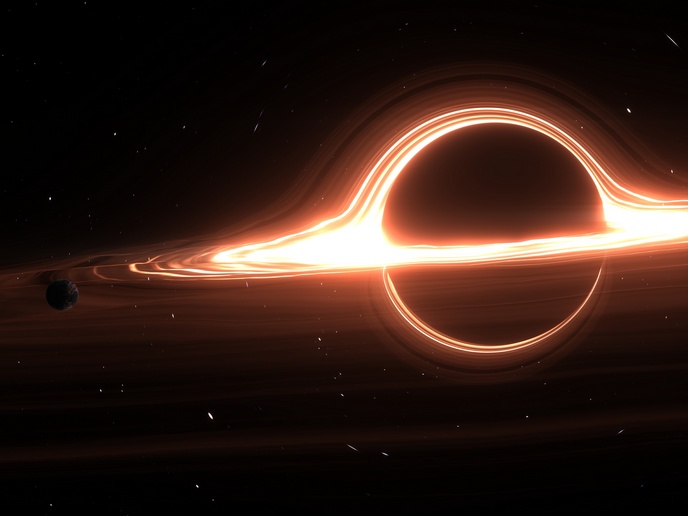On hungry black holes and ill-fated stars
A Sun-like star in a faraway galaxy is gradually being eaten away by a monster black hole, losing around three Earth masses of material every time it passes close by. This discovery, made possible in part thanks to support from the EU-funded AHEAD2020 and TEDE projects, provides valuable new insight on the disruption caused when an orbiting star strays too close to a black hole. Details on the star’s gradual destruction by the hungry black hole were published in the journal ‘Nature Astronomy’. The observation was made using a new method for analysing data obtained from the X-ray Telescope (XRT) of NASA’s Neil Gehrels Swift Observatory. “Swift’s hardware, software, and the skills of its international team have enabled it to adapt to new areas of astrophysics over its lifetime,” reports the study’s lead author Dr Phil Evans of AHEAD2020 and TEDE project partner University of Leicester, United Kingdom, in a news item posted on NASA’s website. “Neil Gehrels, the mission’s namesake, oversaw and encouraged many of those transitions. Now, with this new ability, it’s doing even more cool science.” Prior to this new discovery, astronomers had already been investigating variations of the disruption that happens when a star’s orbit brings it too close to a black hole. Every time this happens, gravitational forces result in strong tides that cause the star to bulge outward and shed material. This process is repeated with every orbit, until the star breaks apart into a stream of gas.
A third type
Astronomers’ earlier observations of such repeating tidal disruptions include two types of outbursts: those that happen every few hours, and those that happen every 100 days or more. Named Swift J0230, the new disruption occurs every few weeks, falling somewhere between these two systems. Swift J0230 was first observed on 22 June 2022, when the XRT captured a bright flash in a galaxy about 500 million light years away in the northern constellation Triangulum. Following more Swift observations of the event, the researchers found that the X-ray flash did not decay as expected, but instead shone brightly for 7 to 10 days and then abruptly switched off. This process was repeated in cycles of 25 days or so. The research team believes that Swift J0230 is a repeating tidal disruption of a star similar in size to our own Sun that is orbiting a low-mass black hole over 200 000 times the Sun’s mass. Every time the star’s orbit brings it close to the black hole’s gravitational pull, it loses material equivalent to three Earth masses. The intense heat generated by this process – somewhere around 2 million °C – releases an enormous amount of X-rays that are captured by the Swift satellite. Co-author Dr Rob Eyles-Ferris, also of the University of Leicester, comments in a news item posted on the university’s website: “In most of the systems we’ve seen in the past the star is completely destroyed. Swift J0230 is an exciting addition to the class of partially-disrupted stars as it shows us that the two classes of these objects already found are really connected, with our new system giving us the missing link.” TEDE (Transient Engine Driven Explosions) ended in March 2023. AHEAD2020 (Integrated Activities for the High Energy Astrophysics Domain) ends in December 2024. For more information, please see: AHEAD2020 project website TEDE project
Keywords
AHEAD2020, TEDE, black hole, star, orbit, Swift, Swift J0230



